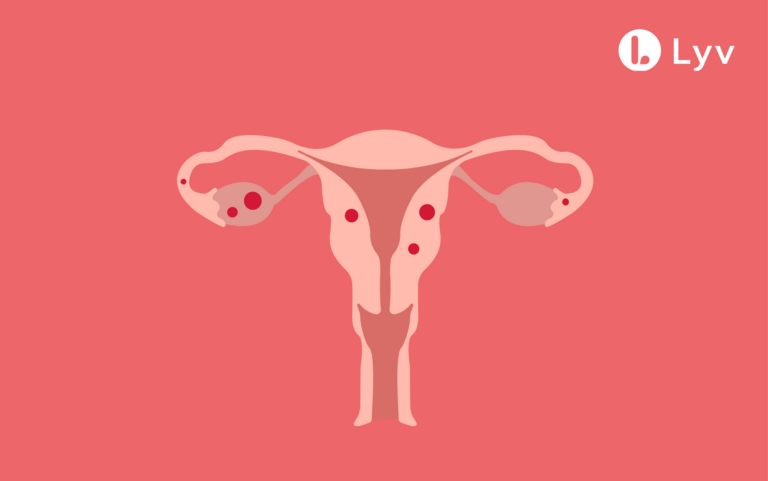If you have ever watched your child curl their tiny fingers around your thumb and felt an avalanche of questions rush through your mind about what’s “normal” for your own body, you’re not alone in that experience. From learning about breast function in feeding to noticing changes across different life stages, even small shifts in shape, size, or feeling can unsettle the calmest parent. Is it normal for breasts to grow tender before periods? Why is there swelling during pregnancy — or sudden changes after breastfeeding stops? Wondering if lifestyle, diet, or stress could really make a difference to long-term health, or even if men might experience changes too? Every parent eventually contemplates at least some of these questions. The mystery doesn’t end with nutrition: the story also involves hormones, family traditions, medical advances, and much more. Today, let’s untangle it — and discover what is truly happening beneath the surface.
Understanding breast structure and main roles
Layered like a biological marvel underneath the skin, the breast is a blend of glandular tissue, adipose (fat) cells, mammary glands, and essential supportive ligaments (like Cooper’s ligaments). The soft curve, often changing in size with fluctuations in body weight, is determined to a large extent by these fatty tissues, while underneath, a complex architecture of lobes, lobules, and microscopic alveoli stand ready for one remarkable task: producing and secreting milk for nourishing infants. This is the heart of breast function in early childhood.
Do you ever notice that breasts feel firmer or more sensitive sometimes, or wonder why veins seem more visible? As hormones such as estrogen, progesterone, and prolactin surge (for example, during pregnancy), the glands expand and mature. Central to the function, ducts deliver the milk, culminating at the nipple, circled by the areola, where the mysterious Montgomery glands offer lubrication and protection. Not to be forgotten are the anchoring connective tissues — quiet guardians against gravity’s persistent pull over the years.
Meanwhile, in males, the same organ exists mostly as a vestige. Without the complex networks for lactation, men’s breast tissue does still participate in sexual sensation thanks to rich nerve endings — showing how biology always offers surprises.
Breast function through an evolutionary and hormonal lens
Have you ever wondered why human breasts are permanently developed, rather than fluctuating only with reproductive cycles like in other mammals? Over generations, breast function evolved not just to nourish but to send multifaceted signals — biological, social, and sexual. The continual development reflects the importance of feeding in unpredictable environments, while at the same time, acting as an outward sign of maturity and readiness for bonding.
Puberty signals transformation. Estrogen lights the spark for duct growth and increased fat deposits, while progesterone matures the milk-producing lobules. During childbearing years, prolactin gets ready for action, and oxytocin — often called the “love hormone” — ensures the astonishing let-down reflex works smoothly, allowing milk to reach a hungry newborn. During each menstrual cycle, many mothers notice extra fullness, tenderness, or tension, as hormonal tides ebb and flow.
Menopause, on the other hand, with its dropping estrogen and progesterone, gently shifts the architecture yet again — more fat replaces glandular tissue, resulting in a different texture, sometimes stopping hormone-sensitive changes altogether. Meanwhile, in men, testosterone quietly curbs any glandular blossoming that might mimic lactation, keeping tissue development at bay.
The journey of breasts during pregnancy
Picture the first signs of new life bringing tenderness, swelling, or even tingling to the breast. Yes, sometimes these hints come before a missed period! The body begins preparations early: mammary glands gear up, colostrum may even appear by the end of the second trimester. Areolas darken, Montgomery glands become more visible — all signs that the breast function is evolving to support an infant’s arrival. Stretch marks may stripe the skin as fullness grows, giving visual proof that nothing here is static.
By the third trimester, breasts are at their most voluminous, sometimes prompting surprise — or discomfort — with their changes. A well-fitted, supportive bra becomes more than a comfort: it protects delicate ligaments from too much stretching.
Breastfeeding: lactation, bonding, and life after
The miracle happens: colostrum, that thick golden nutrient-rich milk, is the first to arrive, nurturing in those first days after birth. “Milk coming in” soon follows (typically within 2–4 days), signaled by swelling, warmth, even aches — a dramatic transformation as blood flow and milk volume escalate. If breastfeeding continues, breasts wax and wane each day in response to the infant’s needs. Morning firmness contrasts with the soothing softness of post-feeding, all perfectly coordinated through prolactin and oxytocin.
Perhaps you’ve heard whispers that breastfeeding “ruins” breast shape — science tells a more nuanced story. It’s not the act itself, but abrupt or significant changes (like early pregnancy growth or sudden weaning) that stretch suspensory ligaments. Over time, this can result in sagging (ptosis), but experiences dramatically differ: some women recover pre-pregnancy form, others find lasting fullness, and some observe long-term changes in nipple color or sensitivity.
It’s worth noting that those choosing not to breastfeed usually find things return to baseline — with both paths entirely respectable and deeply personal.
Breast health and natural aging
With each passing year, every part of the breast adapts. The skin loses spring, ligaments stretch, fat takes up more space as glandular tissue diminishes. Add the pull of gravity, the effects of pregnancy, breastfeeding, or just the simple passage of time, and you see why sagging or softened texture is so common. Breast function continues in other ways — as part of sensuality, body image, or comfort — but it is time itself that becomes the strongest shaper in the long run.
Milk production explained: the science of lactation
Alveolar cells — those tiny milk factories hidden within lobules — begin churning out milk, guided by prolactin released after delivery. When your baby suckles, a rapid chain reaction releases oxytocin, causing the myoepithelial cells to contract and propel milk forward (the famed let-down reflex). Foremilk and hindmilk, each with unique nutritional roles, are delivered seamlessly — adapting automatically to your child’s stage and hunger.
Breastfeeding gives so much more than nutrition: from secretory IgA antibodies and living immune cells ready to shield baby from infections to the emotional embrace that enhances the mother–infant bond, it’s a process both physiological and profoundly emotional. For mothers, months (or years) of breastfeeding can lower risks for cancer, help with postpartum weight regulation, and even affect heart health.
Breasts as symbols: femininity, sexuality, and psychology
For many, breasts are deeply tied to identity, confidence, and self-perception. Emerging at puberty, they become powerful secondary sexual characteristics, entwined with both personal and societal ideas of beauty, maturity, and sexual attraction. The nipple–areola complex is custom-built for sensitivity, designed for both the reflexes needed in feeding and the pleasures of intimacy.
Yet, culture and media amplify anxieties too: norms about the “right” appearance, concerns about breast changes after pregnancy, or worries about public breastfeeding can all shape self-image. Every parent brings their own perspective, sometimes feeling caught between tradition, practicality, and personal comfort.
Breast health: conditions, vigilance, and care
It’s normal to spot differences — many discover asymmetry, changes in density, or even inverted nipples. Throughout life, breasts change in texture and sensation. Benign conditions abound: mastitis (especially during lactation), cysts, or fibroadenomas are common, and hormonal shifts may create recurring tenderness or lumps. Occasional anomalies at birth — like extra nipples, or underdeveloped breasts — are typically harmless.
Breast cancer, more prevalent with increasing age but not only affecting women, deserves vigilant attention. Any enduring lumps, unexplained pain, or skin changes warrant timely consultation with a health professional. Surgeries to reshape, reduce, or reconstruct, as well as hormone therapies, may influence sensation and overall breast function. Empowerment lies in information and early detection.
Vital networks: blood, lymph, and nerves
Functioning smoothly requires more than just glandular magic — blood vessels, especially the internal thoracic and lateral thoracic arteries, ferry oxygen and nutrients essential for tissue health (especially during lactation), while the venous system handles waste removal. The lymphatic system, a key guardian against infection, drains excess fluids and scans for signs of disease, mainly through axillary lymph nodes. Blockage or surgical injury here sometimes causes lymphedema — persistent swelling that needs some extra care.
Sensitivity, so central to both feeding and sexual function, is orchestrated by dense innervation from intercostal nerves (particularly T4–T6), clustered densely around the nipple–areolar region. Gentle touch, temperature, even subtle friction — all of it, picked up and relayed instantly.
Breast function in males: more than meets the eye
While rarely considered, male breast tissue is not without intrigue. The same template forms during fetal development, but testosterone, rising in puberty, blocks further lobule and alveoli growth. Under certain circumstances — puberty, hormone treatments, specific medications, or underlying conditions — the balance shifts, estrogen may predominate, and gynecomastia (benign enlargement of the male breast) can occur. There is potential for sensitivity and even, rarely, nipple discharge. Breast cancer, although much less common, still warrants awareness.
How lifestyle and environment shape breast health
Daily habits leave their mark. A balanced diet, loaded with vegetables, pulses, and lean proteins, does more than support general wellness — it stabilizes hormonal swings that underpin healthy breast function. Regular activity, even something as simple as brisk walking, helps keep weight in check, further harmonising hormone levels. Well-chosen bras, especially during sport, are important: by minimising ligament stretching, they preserve shape and comfort for the long haul.
Obesity, on the other hand, can elevate estrogen and raise risks for inflammatory diseases. Alcohol and cigarettes impact breast tissue and link to higher risks of cancer. Medications, especially those influencing hormones, have to be weighed thoughtfully. Stress, the ever-present houseguest, disrupts hormonal cascades — reinforcing how peace of mind affects physical health, even at the cellular level.
Psychological and social factors: navigating expectations
Feeding choices, body image, family and cultural values — all collide in this territory. Some parents feel weighed down by public opinions on breastfeeding, while others quietly carry concerns about their “new” bodies after birth. Media, family traditions, and peer discussions all contribute, shaping both confidence and anxiety.
It’s easy to get swept up in comparisons or misconceptions. More recently, awareness campaigns and positive media representation encourage diversity and honest dialogue — fostering respect for all feeding choices and combatting body-shaming or judgement. Open conversations, whether at home, among friends, or with professionals, can restore confidence and celebrate each unique journey.
Medical advances and the future of breast health
The science surrounding breast function never stands still. From gene expression profiling for more tailored cancer prevention to cutting-edge imaging — think 3D mammography, high-resolution ultrasound, or MRI — detection is becoming quicker and more accurate. Surgical methods now protect both sensation and form wherever possible, and gender-affirming care is broadening options for those seeking harmony between body and identity. Researchers also dig deeper into hormonal foundations, congenital issues, and the psychological ripple effects — all making for a more holistic understanding of what breasts mean, physically and emotionally, across the lifespan.
Prevention and early education are taking centre stage: learning self-exam techniques, considering family risks, and easy access to genetic counselling transform fear into proactive self-care. A team approach — blending medical insight, psychological support, and family conversation — makes every family safer, stronger, and better equipped for the choices ahead.
Key Takeaways
- Breast function is a complex, multifaceted phenomenon — supporting not just infant nutrition, but spanning sexual health, personal identity, and emotional well-being.
- Hormones orchestrate changes from childhood into old age; texture, shape, and sensation often shift over time, especially during life events like pregnancy and menopause.
- Healthy lifestyle choices and emotional resilience thanks to accurate information offer real protection and assurance.
- Psychological and social pressures are real — choose acceptance and seek a community that celebrates diversity in both body and personal choices.
- Ongoing medical breakthroughs continue to transform care for families.
- Need guidance tailored to your journey? Download the application Heloa, offering personalised advice and free health questionnaires for your children.
Questions Parents Ask
Can breast function be affected by medical conditions, and if so, which ones?
Definitely. Various conditions can impact breast function — common ones include mastitis (which causes pain and swelling, particularly during breastfeeding), benign cysts, and lumps like fibroadenomas. Hormonal imbalances, medications, and thyroid issues may also play a part, possibly affecting milk production or causing changes in tissue texture. Rarely, cancers or congenital anomalies might disrupt normal activity. If you spot persistent lumps, skin changes, or anything unusual, a consultation with a health expert is always wise.
How do hormonal changes throughout life affect breast function?
Hormones are constant companions, guiding the breast through puberty, menstruation, pregnancy, and menopause. As a young girl, estrogen and progesterone pave the way for development; each monthly cycle can bring brief tenderness or mild swelling. Pregnancy activates the breast for feeding, while menopause shifts things once again as estrogen decreases, usually making tissue softer or altering size. Every stage brings its own experience — and questions too.
What is the role of breasts beyond breastfeeding?
Breast function extends far past feeding. Beyond nourishing babies, breasts influence personal and cultural concepts of femininity, intimacy, and confidence. Sensitivity to touch, emotional connections during feeding or closeness, or even self-perception — all illustrate how diverse the functions really are. For some, they’re a symbol; for others, a source of pleasure, security, or bonding. Each experience is uniquely meaningful.









